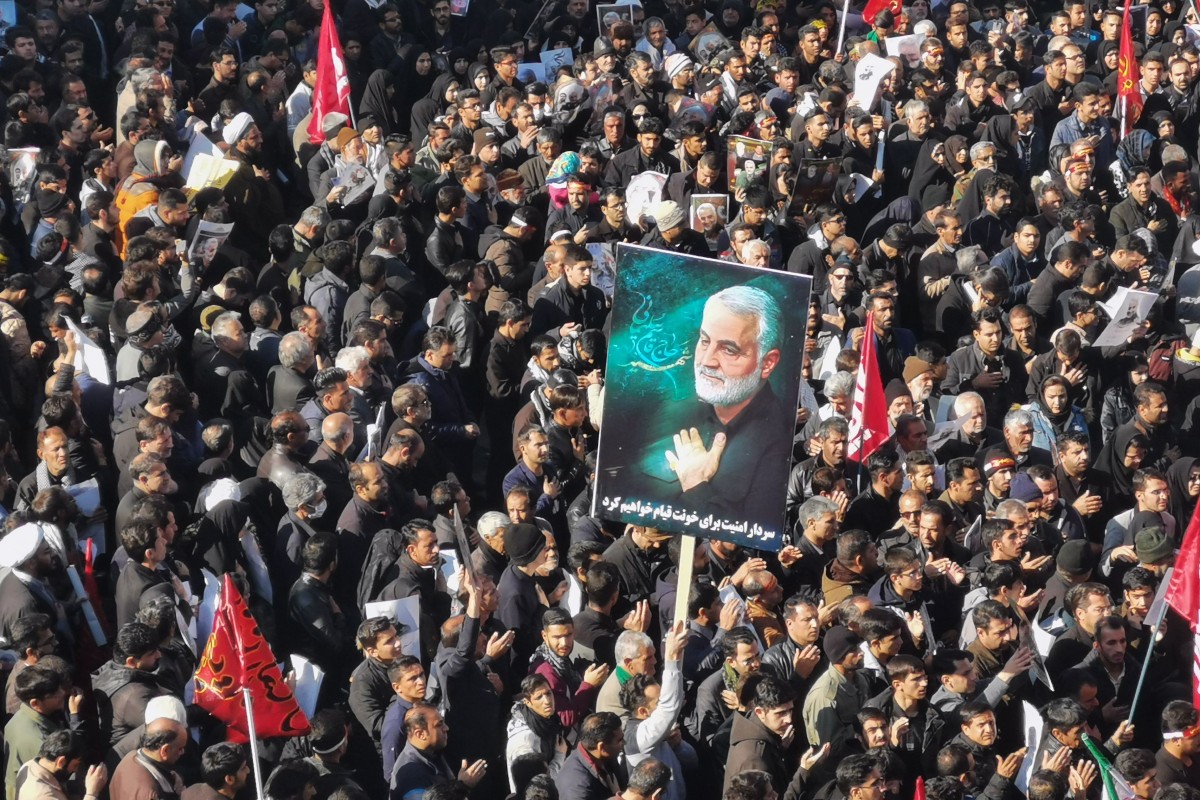A timeline of the souring relations between the United States and the Middle Eastern nation that led to Donald Trump authorised the assassination of Iran’s top military leader
 Mourners gather in Iran for the funeral of the country's top general, Qasem Soleimani, after he was killed in a drone strike by the US.
Mourners gather in Iran for the funeral of the country's top general, Qasem Soleimani, after he was killed in a drone strike by the US. The new decade has kicked off with a rapid rise in tensions between the US and Iran, after the US announced on January 3 it had killed one of Iran’s top military commanders. In response, Iran threatened “severe revenge” – starting with multiple missile attacks on two US military targets in Iraq on Tuesday. It also said on Monday it will no longer abide by the 2015 nuclear deal, which limits the country’s development of nuclear technology.
General Qasem Soleimani was killed by a US drone strike in Iraqi capital of Baghdad. The US claims that the elite military force Soleimani was in charge of, known as the Quds Forces, trained and funded terrorist groups and was responsible for the deaths of hundreds of Americans.
Increased tensions across the Gulf as a result of the killing caused oil prices to jump.
Soleimani’s death provoked a huge outpouring in Iran, with hundreds of thousands of people gathering to mourn him. At the funeral held in his home city of Kerman, 50 people were killed in a stampede.
Although the assassination may have taken some by surprise, relations between the US and Iran – already long-time foes – have been steadily worsening since the US pulled out of the nuclear deal in 2018, saying it wasn’t tough enough. The US reintroduced trade sanctions against Iran, which it tightened again last year, crippling Iran’s economy.
In response, Iran began exerting pressure of its own.
US-Iran tensions: what you need to know
In May and June last year, explosions hit six oil tankers in the Gulf of Oman. The US blamed Iran for the attacks. Later in June, Iran shot down a US military drone it claimed was over its territory, although the US said it was over international waters. In July, Iran began backing away from the nuclear deal.
It’s possible that the US hopes its “maximum pressure” campaign will eventually push Iran into agreeing to a new, tougher deal that would further reign in its nuclear ambitions. But in the meantime, Iran is likely to continue to retaliate through proxy (indirect) attacks or cyberattacks, putting other Gulf countries at risk.
